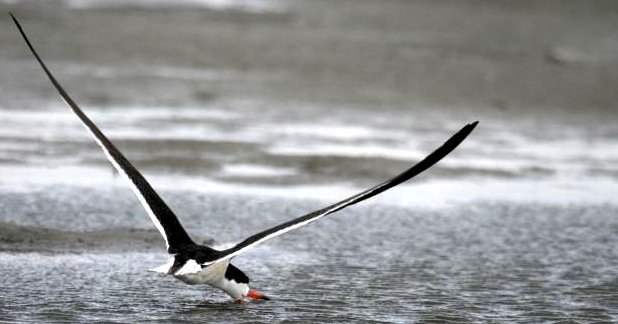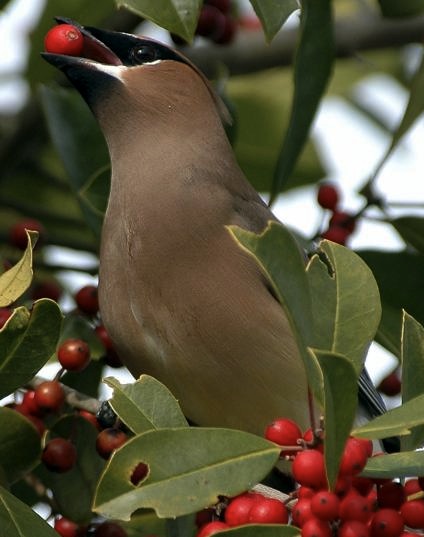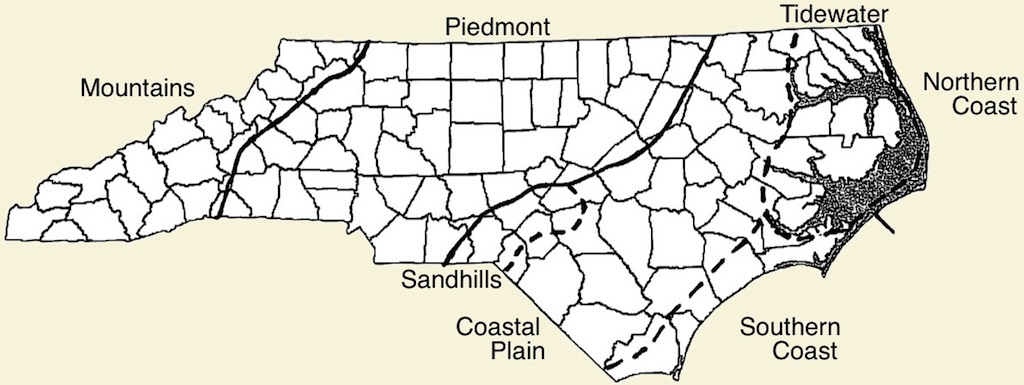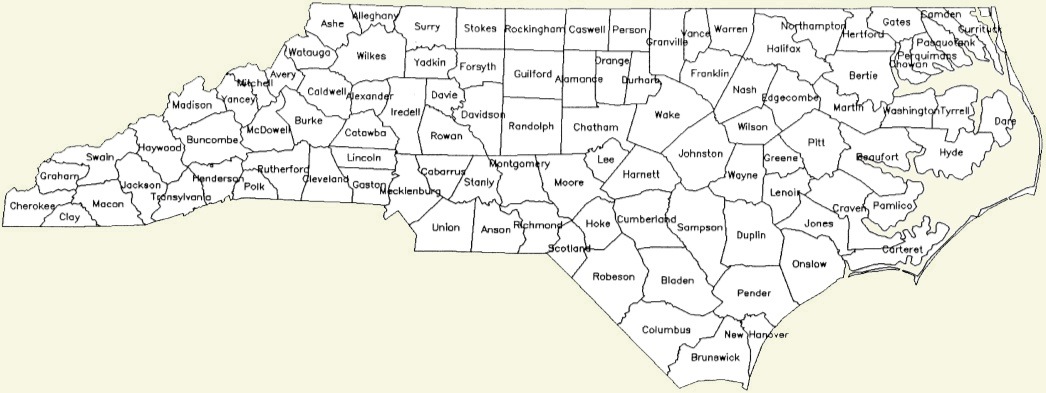| Welcome to the on-line "Birds of North Carolina" website! This website aims to provide a compendium of all of the bird species recorded (i.e., accepted to either the Definitive List or the Provisional List) in North Carolina, with general information about their distribution in the state -- by regions or provinces, their relative abundance in each region, their periods of occurrence in the state, and information about finding each species in the state. County maps of occurrence are provided for each species; in addition, breeding season maps, showing abundance by county, for each nesting species are being developed, and wintering season maps will be developed later. To see a species account, click on the first letter of the species' name, find the species in the resulting list, and then click "View"; or enter the species name in the "Search Common or Scientific Name" search box. You may also find the species you want by clicking on the dropdown (blue arrow) under either of the two Family entries, then navigating to the species of interest and clicking "View". Once you are at a species account, you can navigate to the previous species in the checklist sequence by clicking on the flying heron on the left, or to the next species in the checklist order by clicking on the flying heron on the right; or, you can click on the dropdown arrow to the right of the species name. Each account also has four interactive links, below the species name. There are several tabs on the left side of the homepage. Currently, the most useful one is probably the interactive Carolina Bird Club link for "Definitive/Provisional List", which lists all of the species on the current NC state list. "County Listing" allows the user to determine all of the species recorded in a chosen county, or shows a county occurrence map for a chosen species. Enjoy browsing the website! |
| Common Name begins with: [ A ] [ B ] [ C ] [ D ] [ E ] [ F ] [ G ] [ H ] [ I ] [ K ] [ L ] [ M ] [ N ] [ O ] [ P ] [ R ] [ S ] [ T ] [ U ] [ V ] [ W ] [ Y ] [ Z ] | |
| Scientific Name begins with: [ A ] [ B ] [ C ] [ D ] [ E ] [ F ] [ G ] [ H ] [ I ] [ J ] [ L ] [ M ] [ N ] [ O ] [ P ] [ Q ] [ R ] [ S ] [ T ] [ U ] [ V ] [ X ] [ Z ] | |
| Family (Alpha): | |
| Family (Taxonomic): | |
| Introduction |
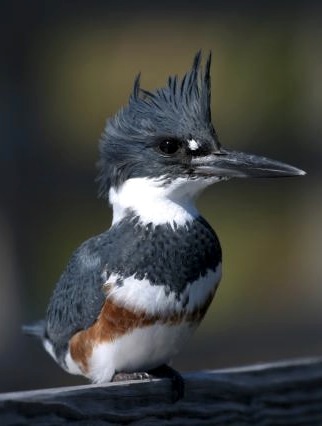 The site is partly an annotated bird checklist, giving specific locations and dates for the very rare species, and partly a "bird-finding guide", though arranged by species, instead of by sites/birding locales. Species not on the Definitive List or the Provisional List are not included; thus, species considered of Unaccepted Origin (such as several waterfowl and parrot species) are not a part of this compendium. The site is partly an annotated bird checklist, giving specific locations and dates for the very rare species, and partly a "bird-finding guide", though arranged by species, instead of by sites/birding locales. Species not on the Definitive List or the Provisional List are not included; thus, species considered of Unaccepted Origin (such as several waterfowl and parrot species) are not a part of this compendium. The site will be updated regularly, especially in terms of updating new records for rare species, new records of less rare species but in regions of the state where few previous records exist, and perhaps record counts of a species in the state or region. However, this work is not intended to be a detailed annotated work, as names of observers are not to be included, nor are record earliest and latest dates for species to be included. The reference is intended mainly for several user groups: 1) out-of-state birders planning a trip to North Carolina, and wanting to know the best times, places, and chances to see target species; 2) in-state birders who are looking for information on new species on their life list, year list, etc.; 3) and all birders who want to find out specific information about a rare species, such as number of records or times and places when and where seen. Because this reference covers well over 460 species, it is unlikely that anyone would desire to print out the entire document, especially as it will certainly be updated constantly. In this last regard, it differs from other references where LeGrand has been the chief species account author -- butterflies and odonates, as these accounts consist of fewer than 200 species each and they are updated only during the winter, such that the accounts are fixed for the field seasons (from early spring through late fall).
Each species account is based mainly on the format found in Virginia's Birdlife: An Annotated Checklist (Rottenborn and Brinkley 2007), with the exception of the last field on these NC accounts. Abbreviations used in the species accounts: CBC = Christmas Bird Count [Note: Reference to the Carolina Bird Club, which often also goes by the "CBC" acronym, in this document will be spelled out in full.] NC BRC = North Carolina Bird Records Committee NWR = National Wildlife Refuge SP = State Park NP = National Park 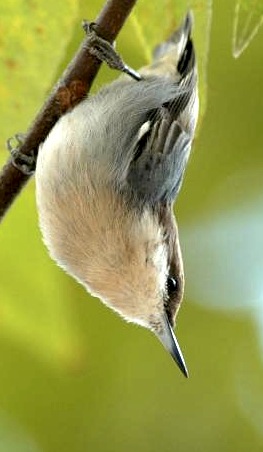 Each species account contains: 1. On the top line: The common name and the scientific name (according to the latest American Ornithologists' Union Checklist and supplements), along with a dropdown list of all of the species within that particular species' family. 2. General Comments: Text about some aspects of a species' life history, such as a decline or increase in numbers in recent decades, a general summary of its primary habitats, and other features that might be of general interest to the reader. In a few cases, for very rare species, particular records are listed here. 3. Breeding Status: The species' nesting status in North Carolina: either Breeder or Nonbreeder, or in a few cases Casual Breeder, Accidental Breeder, etc. A species is on the state's Definitive List (3 or more accepted sight records, or accepted tangible documentation [specimen, photograph, or audio recording]), except where indicated as being on the Provisional List (generally just one or two accepted sight records only). 4. NC BRC List: The species' status on the List of Bird Species of North Carolina: either Definitive, Provisional, or Extinct, as administered by the NC Bird Records Committee. The Provisional List contains species for which there are less than three accepted sight (i.e., non-documented) records. Species of unaccepted origin are not included on the List of Bird Species of North Carolina. 5. Statuses and Ranks. Codes for a species' legal State and U.S. (Federal) statuses, and for its State and Global ranks, as given by the NatureServe Network: State Status: E = Endangered T = Threatened SC = Special Concern SR = Significantly Rare W = Watch List E, T, and SC are legal designations by the NC Wildlife Resources Commission; SR and W are non-legal designations by the NC Natural Heritage Program U.S. Status: E = Endangered T = Threatened FSC = Federal Species of Concern The U.S. Fish and Wildlife Service assigns the U.S. Status categories; FSC is a non-legal designation. State Rank: S1 = Critically imperiled in the state S2 = Imperiled in the state S3 = Rare or uncommon in the state S4 = Apparently secure in the state S5 = Demonstrably secure in the state SH = Of historical occurrence, last record over 30 years ago; some expectation of rediscovery SX = Believed to be extirpated in the state, and little likelihood of rediscovery SZ = Zero definable occurrences for conservation, though may be regular in the state as a visitor or regular migrant; generally 5 or more records SA = Accidental or casual; generally with 3-4 or fewer records SE = Exotic, presumed not native to the state SU = Undetermined - need more information on status and trends S#B = Breeding abundance (for migratory species) - e.g., S3B [rare or uncommon breeder] S#N = Non-breeding abundance (for migratory species regularly spending weeks or months in definable locations) -- e.g., S4N [apparently secure wintering species] The N.C. Natural Heritage Program provides the State Ranks. Global Rank - Global ranks are similar to state ranks except "in the state" is replaced by "globally". Additional global ranks are: NR = not yet ranked NatureServe assigns the Global Ranks. 6. Species Status by Province: The general abundance level and timing of occurrence, within each of the three main physiographic provinces in the state: a. Coastal Plain (subdivided unofficially into additional areas -- "northern coast", "southern coast", "Tidewater", "inland", and "sandhills" -- see map below.) b. Piedmont c. Mountains Within each province, the text is arranged first by general abundance levels in that province; then often by text about portions of the province (if applicable), including general elevations in the mountains; then by some general information about periods of occurrence in the province (by parts of months); and lastly by peak counts in the province. In some cases, individual records are given, usually where there are about three or fewer records in that province. Where records have been reviewed and accepted by a Bird Records Committee, the record is followed by *. County names are in italics, to avoid overuse of the word "County".
7. Finding Tips: Information to help the reader with finding the species in the state. At the end of each field, a number of asterisks are given to show the likelihood for a person to see (or hear, if a nocturnal bird) that species in a single week (not day) of birding in a part of the state where it occurs (but not spending all of one's time looking for it). (This is based on material presented in some of the older "Lane Birding Guides", and is intended mostly for out-of-state birders.) 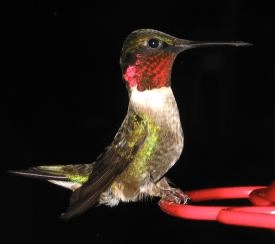 **** -- Hard to miss *** -- Should see ** -- May see (and good chance to see if concentrating on the species) * -- Lucky to find; not to be expected 1/2 * -- Extremely lucky to find. 8. Attribution: The last name of the account editor, with the date of the edits. Persons who wish to edit species accounts should contact the Website Administrator (contact information listed below) for data entry. 9. NC Map: (North Carolina) map showing the counties for which the species has been recorded. Persons who wish to add new county records can do so by clicking the County Listing link at the top of the Home Page, and then follow the instructions on that page. 10. NA Maps: (North American) range maps for the species, as linked to the NatureServe website. |
| References |
| Maps |
| Authors | Photographs | |
| Harry LeGrand (Species Accounts) hlegrandjr@gmail.com |
John Haire (assisting with Passerine accounts) johnhaire@starpower.net |
Belted Kingfisher by Sean McElhorne Black Skimmer by Sam Bland Brown-headed Nuthatch by Scott Hartley Cedar Waxwing by Scott Hartley Ruby-throated Hummingbird by Paul Hart |
| Nate Swick (County Mapping) nswick@aba.org |
Tom Howard (Website Admin) tom.howard@ncparks.gov |
|
Citation: LeGrand, H., J. Haire, N. Swick, and T. Howard. 2025. Birds of North Carolina: their Distribution and Abundance [Internet]. Raleigh (NC): North Carolina Biodiversity Project and North Carolina State Parks. Available from https://ncbirds.carolinabirdclub.org.
| This site links to other websites for maps (NatureServe and NC Natural Heritage Program). |
